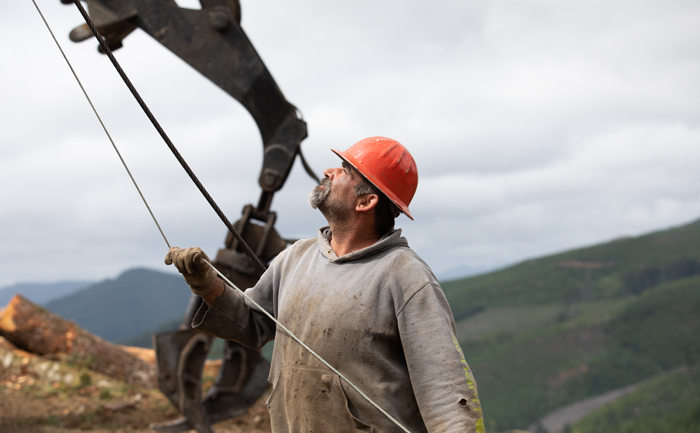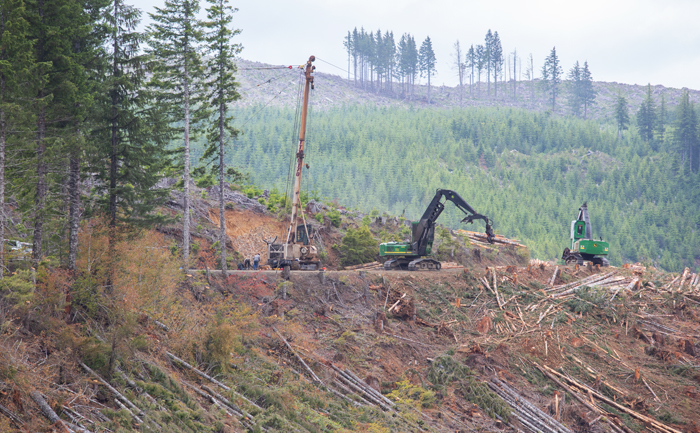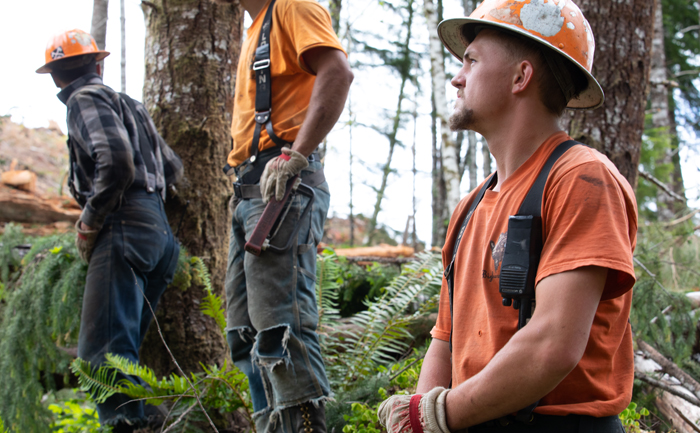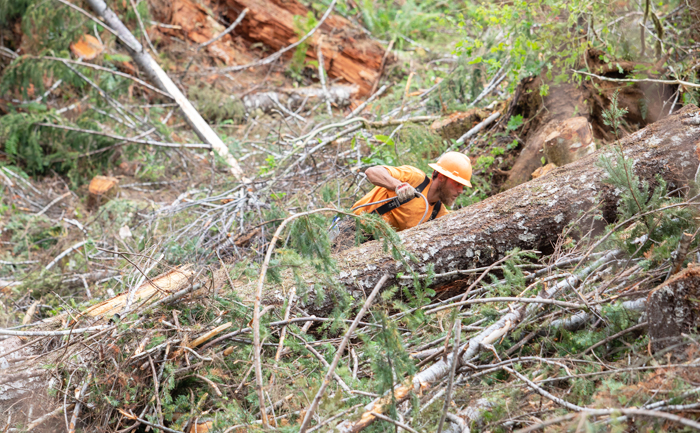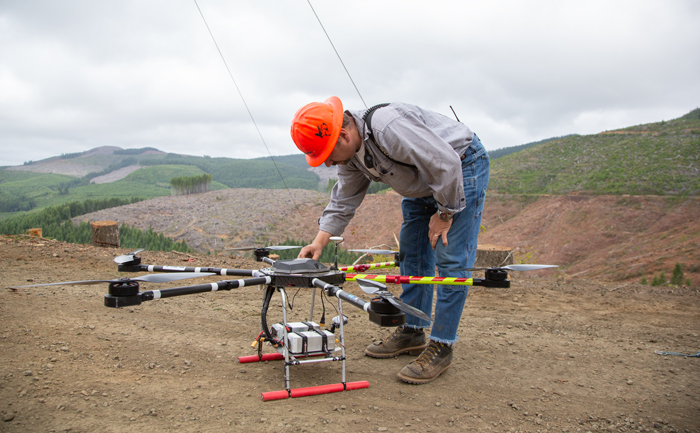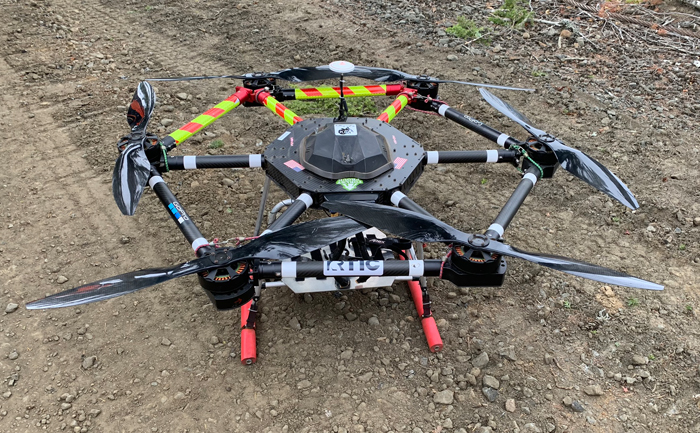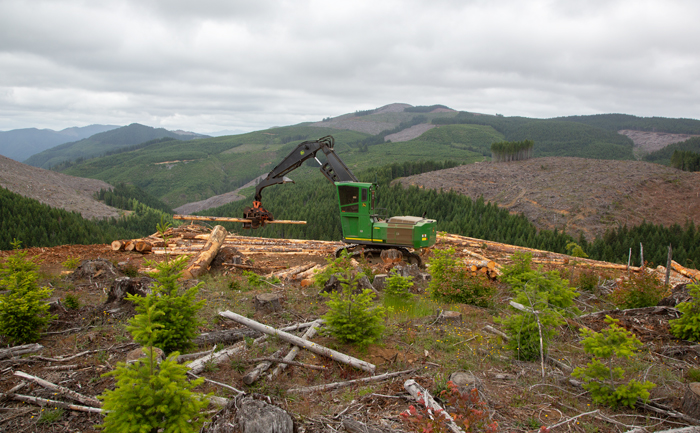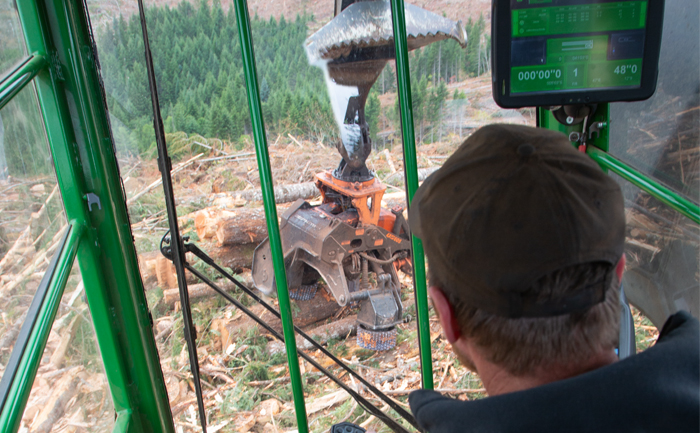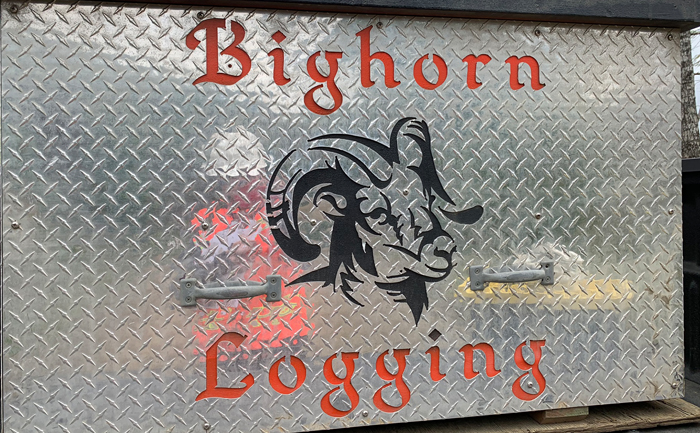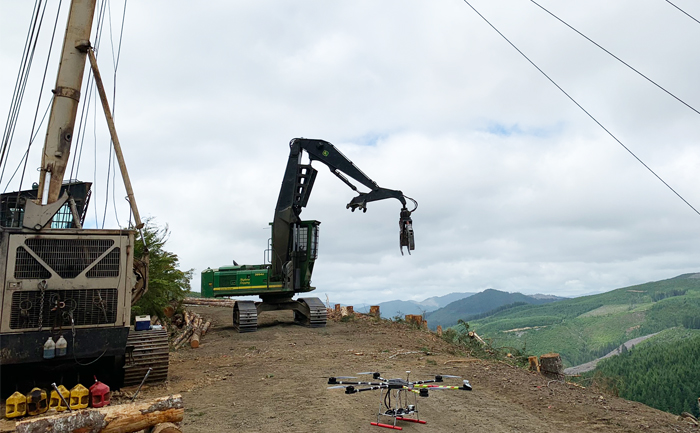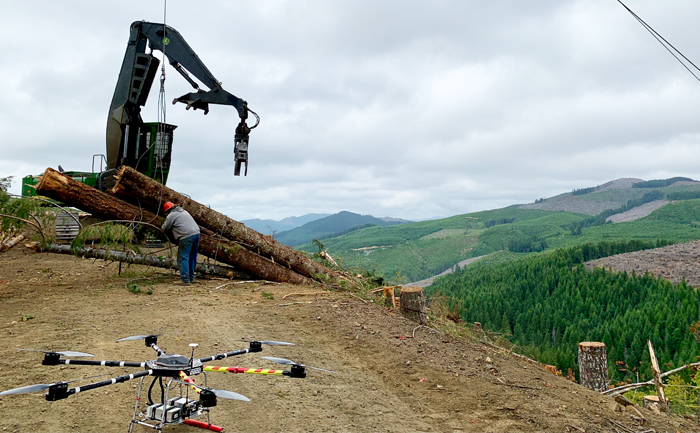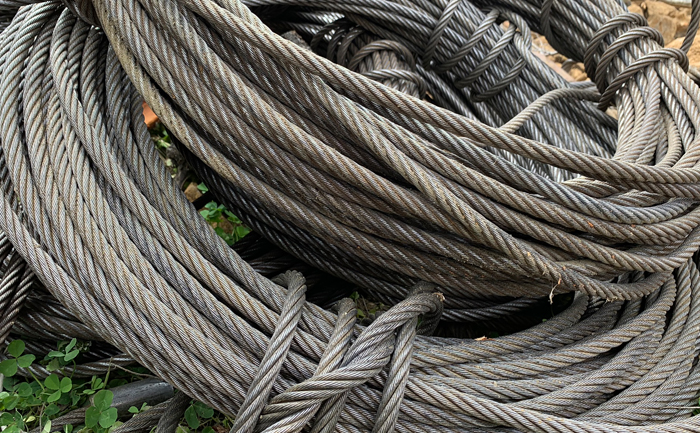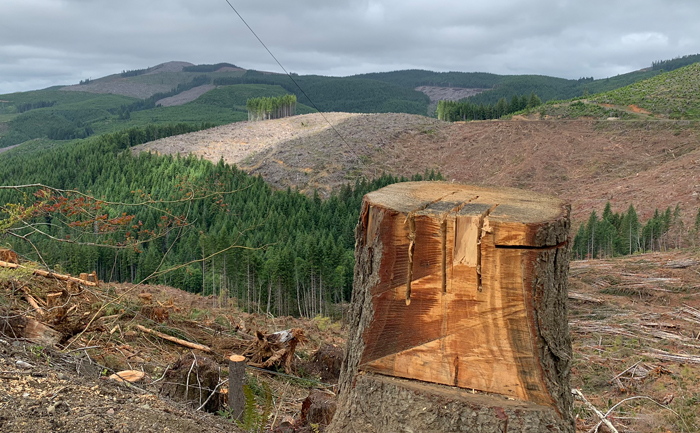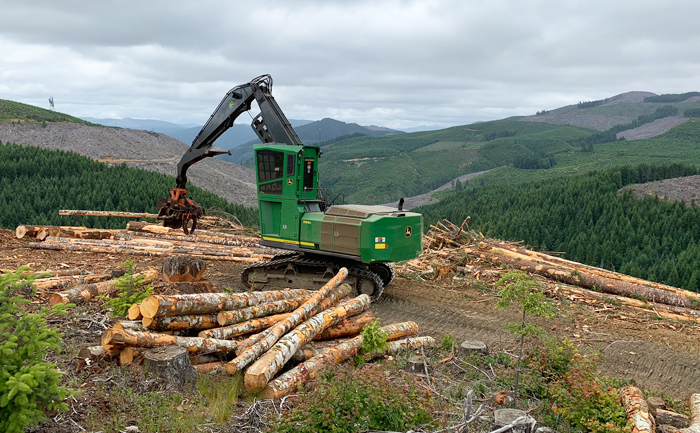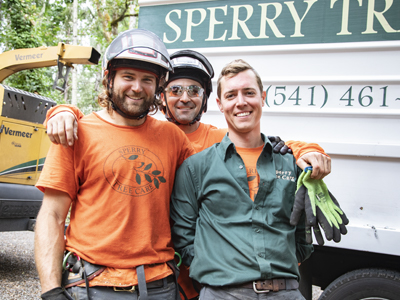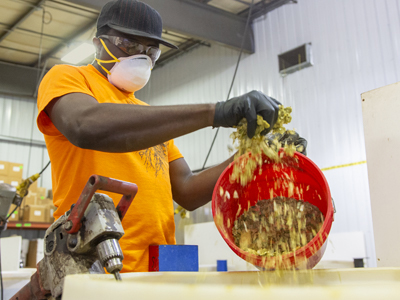Bighorn Logging
What a difference a drone makes. What used to take a logger two days of stringing lines can now take minutes.
At a Bighorn Logging site, deep in the Oregon forest, operations are running like clockwork. On a landing above a canyon, a big machine called a yarder is hauling up felled trees. The trees are attached to a thick line of cable called a skyline by two workers below. Up the trees go, unhooked at the top, and set aside for another machine that strips the bark and chops it into precise pieces.
To get this all set up takes some planning. Imagine looking down into that canyon of trees. The skyline has to be attached to a hearty stump. Once the trees in a section are brought up, another line has to be set up.
To establish the skylines, smaller wire is carried by a "hook tender" down to the logs. The wire weighs about 80 pounds per 250 feet. Imagine tromping through a canyon, packing coils of heavy wire on your shoulder, and navigating straight lines through a maze of hazards. That's what used to be standard operating procedure.
Mark Standley, vice president of Bighorn Logging, says he wished he could shoot lines across canyons with a bow and arrow.
What a difference a drone makes.
What used to take a logger two days of stringing lines can now take minutes.
After watching a YouTube video of a New Zealand company using a drone for logging, Bighorn now has its own drone that carries wire up to 4,500 feet. More importantly, it is a simple and innovative way to reduce injuries.
Not only are strain and injuries avoided, but the hook tender, the most experienced logger on the site, now has the time to train less experienced workers and keep a sharp eye out for safety hazards.
"The main goal is to prevent injuries," says Bighorn's drone pilot Tim Ruyle. "I feel that we've flown enough, surely we've prevented some."
To learn more about Bighorn Logging, visit bighornlogging.com



